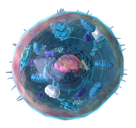 For a prospect anticipated for almost 20 years, the announcement in a Guardian exclusive of the successful birth of one or more babies from one or other technique of what is usually termed mitochondrial donation therapy (MDT) had a more muted reception the following day than might have been predicted. It came second after the Eurovision song contest in the morning BBC news bulletin. There was actually no story about it at all, following a lengthy piece on the showbiz goings on in Liverpool. Many articles commented on the paucity of details provided, and I was not alone in feeling that the Guardian report begged far more questions than it answered. Not least, how many babies had actually been born. One headline certainly referred to UK ‘babies’ in the plural.
For a prospect anticipated for almost 20 years, the announcement in a Guardian exclusive of the successful birth of one or more babies from one or other technique of what is usually termed mitochondrial donation therapy (MDT) had a more muted reception the following day than might have been predicted. It came second after the Eurovision song contest in the morning BBC news bulletin. There was actually no story about it at all, following a lengthy piece on the showbiz goings on in Liverpool. Many articles commented on the paucity of details provided, and I was not alone in feeling that the Guardian report begged far more questions than it answered. Not least, how many babies had actually been born. One headline certainly referred to UK ‘babies’ in the plural.
Robin Lovell-Badge, a developmental biologist at the Francis Crick Institute in London, wanted to know ‘whether there is any risk of them developing problems later in life or, if female, if their offspring are at risk of having the disease’. Rather less tactfully, perhaps, an expert from Oxford commented, ‘It’s exciting news, but at the same time, it doesn’t tell us anything about whether the method has actually worked’. He rightly added, ‘There are open questions, and we need to get answers as soon as possible’.
One reason why answers are needed soon is the danger of raising false hopes for other parents hoping this technique will enable them to have healthy children. Even when the law was first changed to permit the procedure in 2015, concerns were already being raised that it might induce the very disease it is was intended to prevent. The long-term follow-up of these children is essential.
A story from the US illustrates this well. For many years in the USA children have been born with genetic material from three people using cytoplasmic transfer of donor mitochondria into their mother’s eggs before fertilisation. The BBC report does say that the procedure was abandoned but does not say why. The reason was, however, because of the 17 children born with the technique, two were diagnosed with Turner’s syndrome, and another child was diagnosed at 18 months with a borderline pervasive developmental disorder. The normal incidence of Turner’s is between 1 in 2000 and 1 in 2500 live births. Unforeseen complications will hopefully not be repeated with the current mitochondrial transfer techniques.
However, we will not know until these recent birth(s) have reached an age at which it can be determined whether they are disease-free. At this stage, we simply do not know enough and filling people with false hope is not something to be encouraged.



